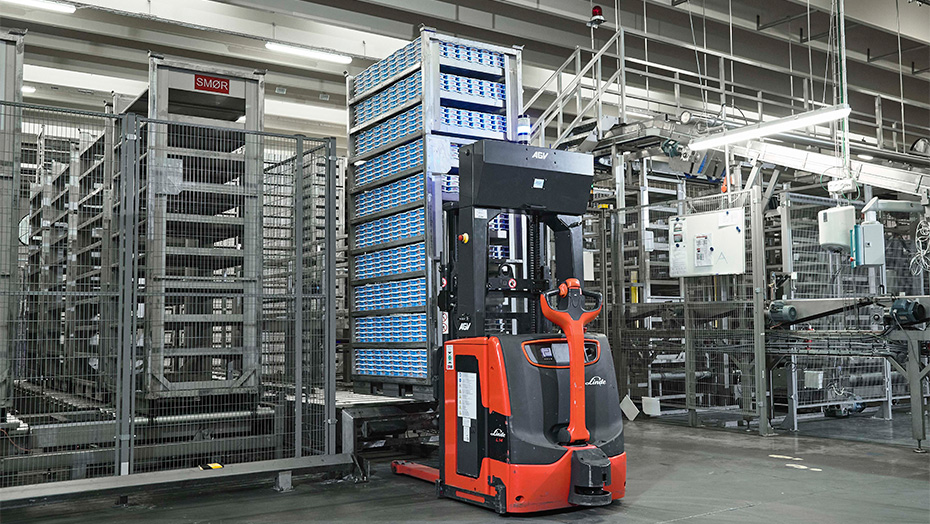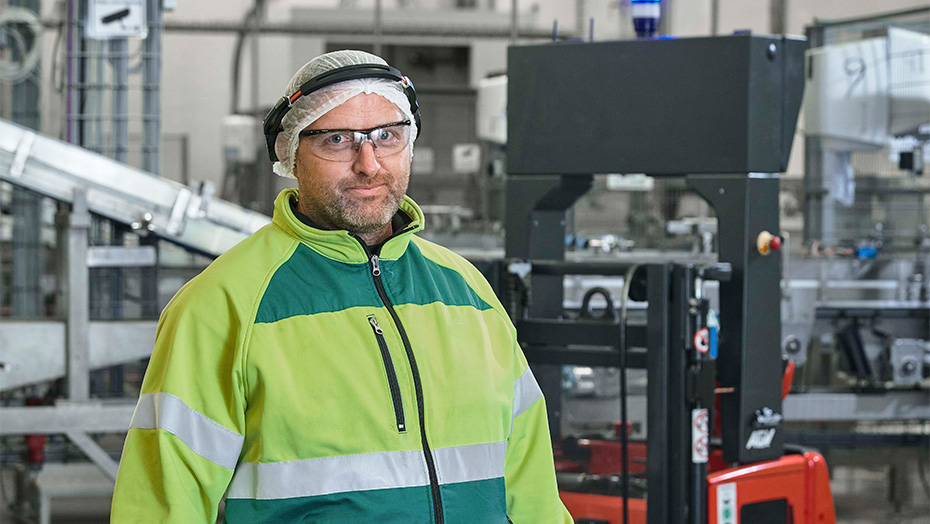Our next auction will start Tuesday, april 23th and will end at Thursday, april 25th 2024 - Visit online auction

The AGV machine, a Linde L14 electric pallet stacker with navigation and safety equipment, is what you could quite rightly call a first-generation model. In 2017, AGV technology was not so widespread here in Denmark, but Arla Foods could see the potential and opted to test out the self-driving machine. It turned out to be a springboard for introducing even more AGV machines.
"The AGV machine is an expression for a kind of automation journey at Arla Foods. We are continuously optimising our production processes down to the smallest detail. This also applies to internal transport, which has become increasingly important in line with the physical expansion of the business here in Holstebro," explains Rune Staghøj Hansen, who is responsible for vehicle management at Arla Foods.

From A to B in a short distance
The self-driving AGV machine was put into operation in late 2017. Since then it has driven a fixed route across a few short metres between a conveyor belt and a buffer area consisting of eight floor panels. This repetitive, monotonous task, which had previously been done manually, could easily be replaced by a self-driving machine. Arla Foods wished to release resources for quality assurance, monitoring and development work, and has certainly succeeded.
"In the first instance, we tested the AGV machine for three months. This test run went positively and we opted to continue with the AGV solution. After the start-up phase, it was able to run uninterrupted with a tiny margin of error and high uptime. It has also contributed towards a calmer working environment in packing, where the operators can now take care of many other tasks," continues Rune Staghøj Hansen.
Hard to wear down
The AGV machine proved it was worth the investment months ago. Furthermore, it has brought several side benefits. It doesn't wear in the same way as regular stackers, which at Arla Foods are worn down after 2-3 years of driving around the clock in the busy packing centre. The AGV machine does its job with great precision and without technical breakdowns. All it needs is to have its batteries changed a couple of times a day.
This single AGV handles hundreds of different varieties of cream cheese, totalling around 60,000 tonnes annually, which are sent out into the world from Holstebro. This takes place on advanced, automated and closed production lines that can be quickly converted to suit new variants. Parallel with production for the retail trade, 25 kg blocks of cream cheese are also produced for the restaurant sector – with a fleet of 80 motorised vehicles to handle the internal logistics.
The AGV technology has made its mark on Arla Foods in Holstebro. Here, AGV machines and operator-driven machines run in the same areas. Traffic rules have thus been established and information campaigns are regularly held for the many employees who move around in the carefully regulated working environment.
At Arla Foods, AGV technology is here to stay and is one of the ways the company plans to raise efficiency further in the future:
"We have had excellent AGV experiences with the solution from N.C. Nielsen. Most likely, we will have it upgraded with Lithium-ION batteries, new navigation options and a floor rail that can charge the machine as it holds still in front of the conveyor. It makes a lot of sense to upgrade a technology that's already working so well," concludes Rune Staghøj Hansen from Arla Foods.

Want to know more?
-
 Søren Skougaard Machine constructor - AGV specialist
Søren Skougaard Machine constructor - AGV specialist



































